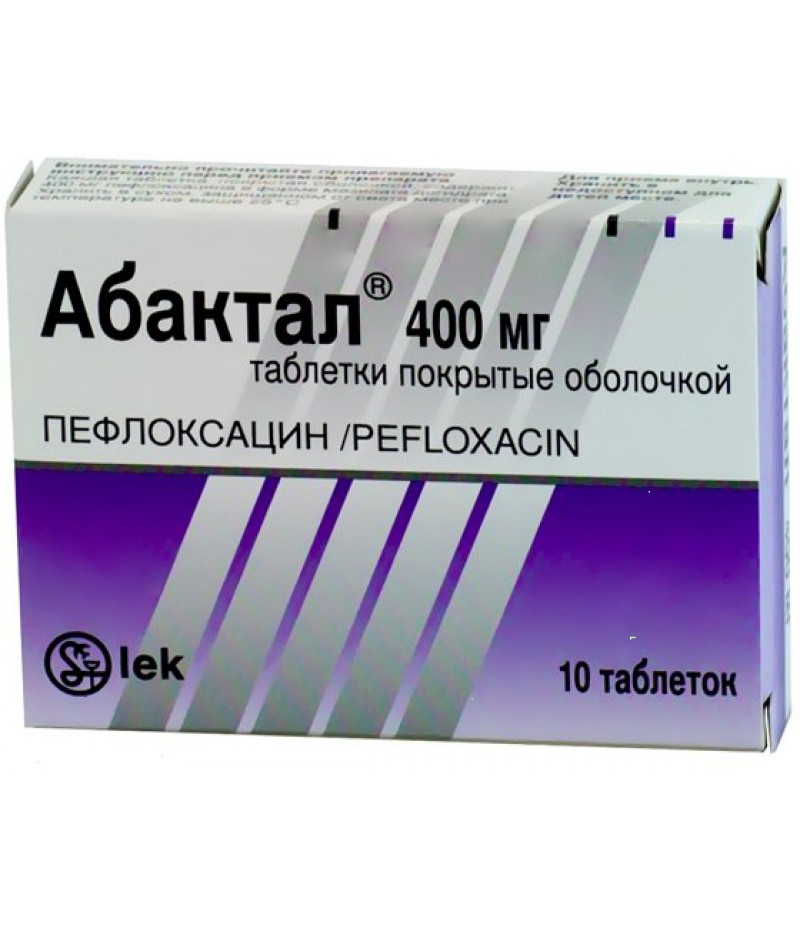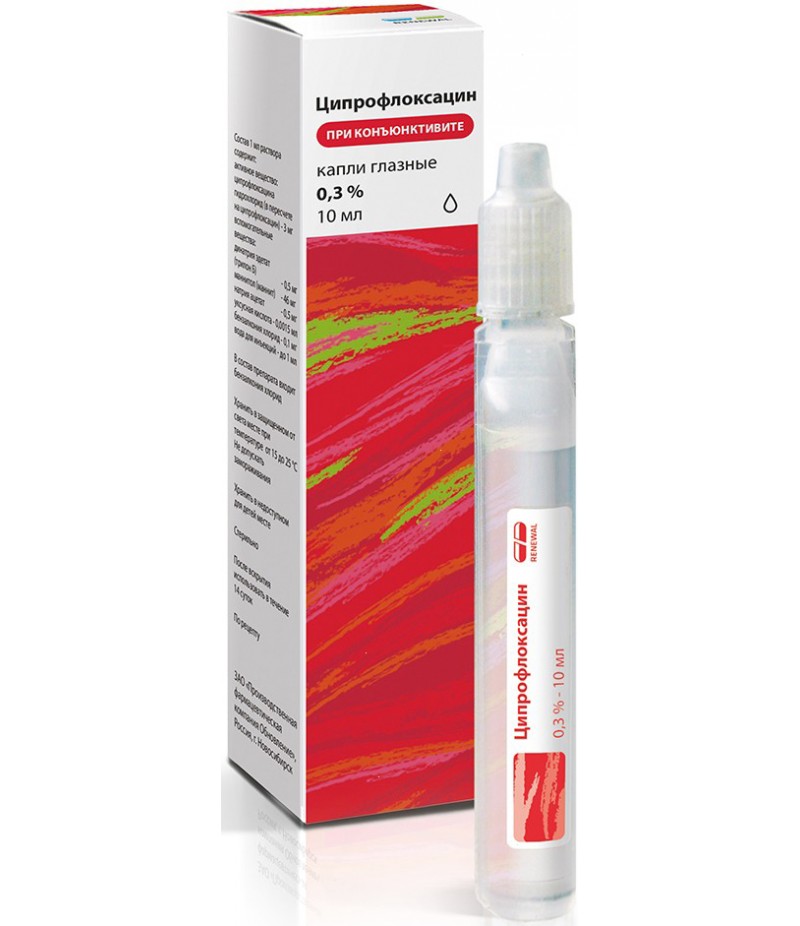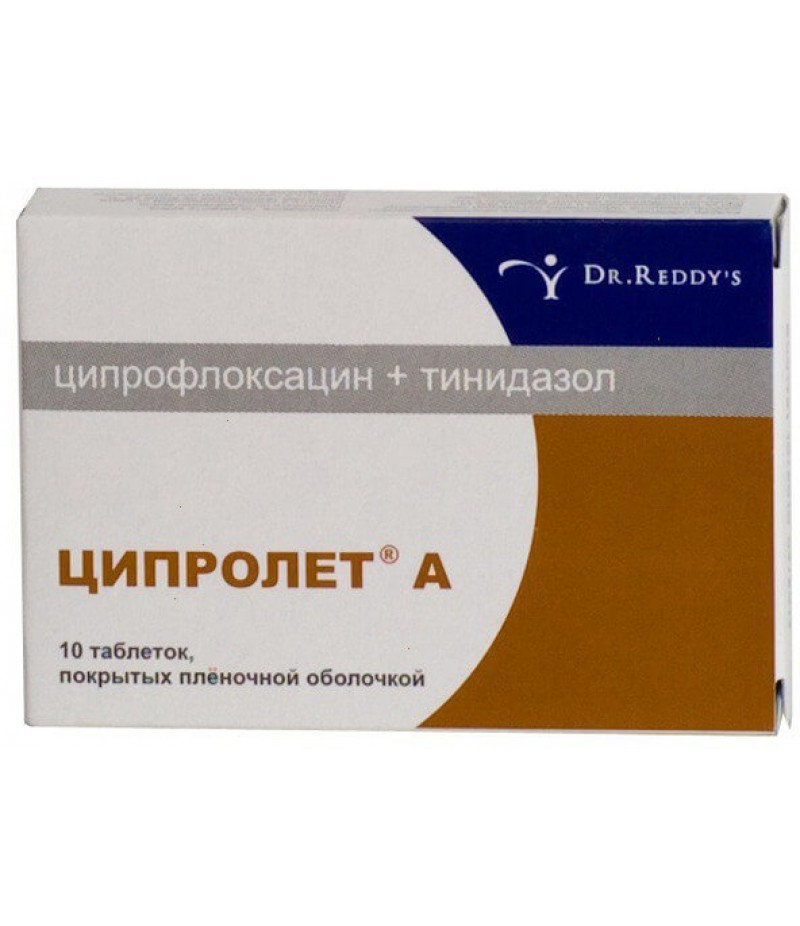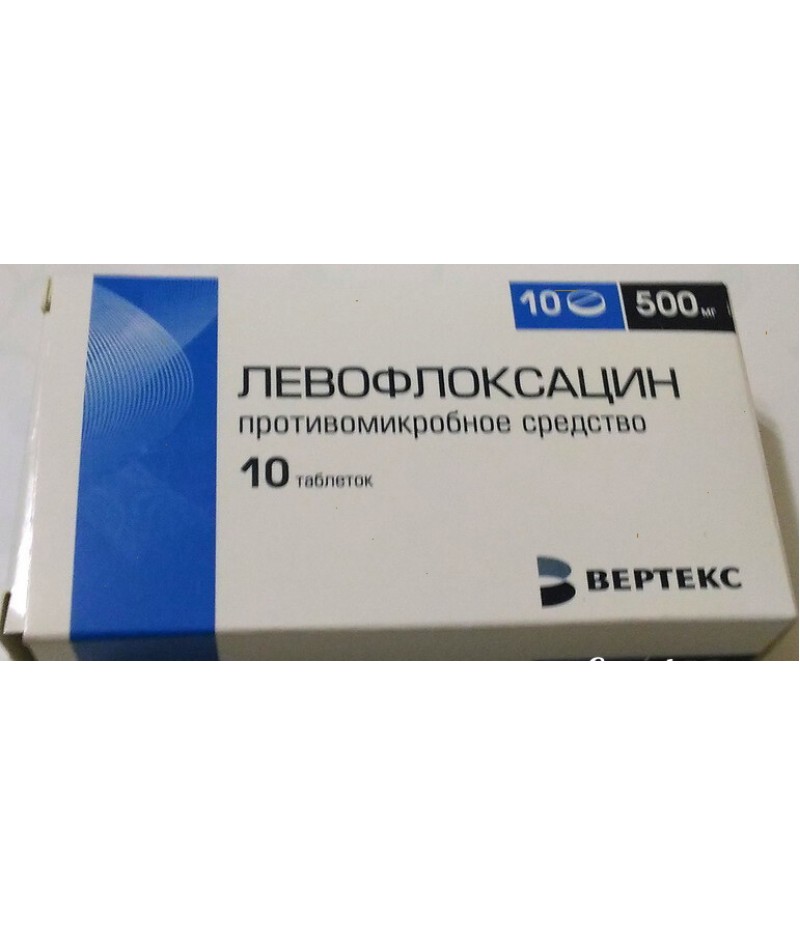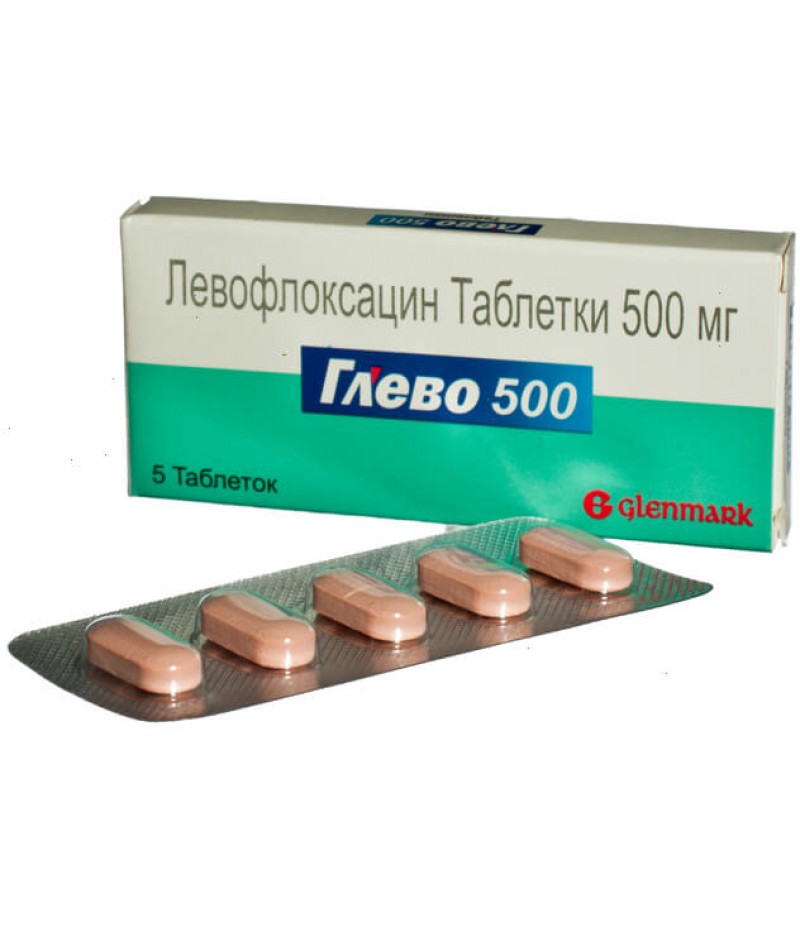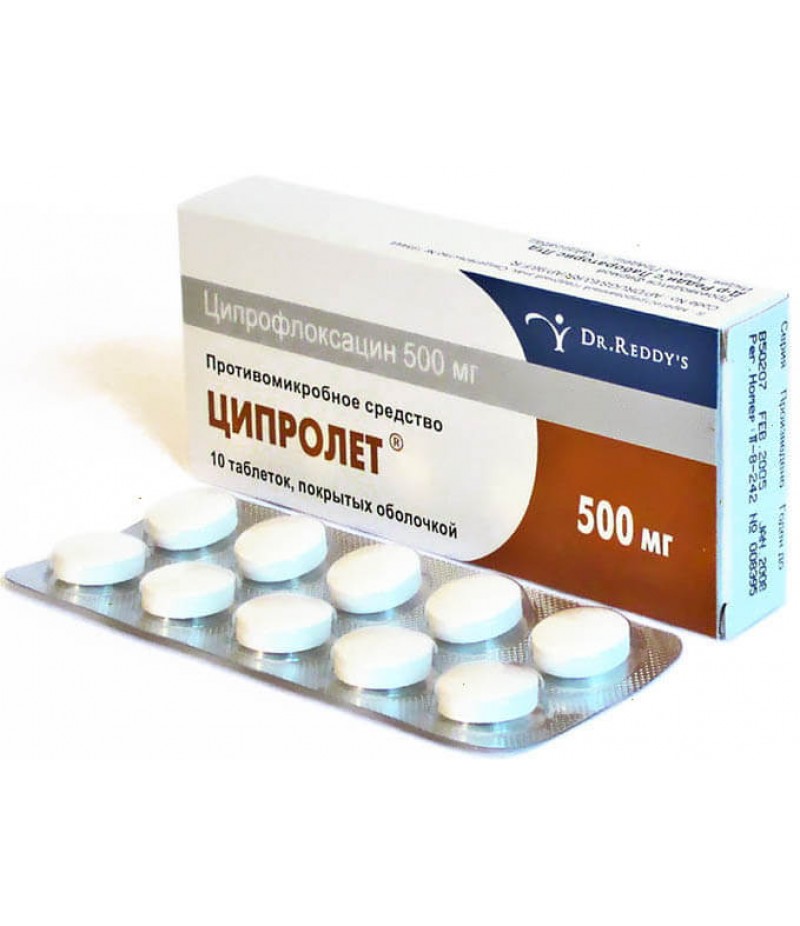Moflaxia tabs 400mg #5
- $18.99
- 3 or more $18.80
- Availability:In Stock
Moflaxia user manualReed more and buy Moflaxia on this pageComposition1 tablet, film-coated, contains:Core:Active substance:Moxifloxacin hydrochloride 454.75 mg, equivalent to moxifloxacin 400.00 mgEx
Tags: tabs
Moflaxia user manual
Reed more and buy Moflaxia on this page
Composition
1 tablet, film-coated, contains:
Core:
Active substance:
Moxifloxacin hydrochloride 454.75 mg, equivalent to moxifloxacin 400.00 mg
Excipients: microcrystalline cellulose 186.05 mg, croscarmellose sodium 32.00 mg, magnesium stearate 6.00 mg
Film sheath: hypromellose 12,60 mg, macrogol 4000 4,20 mg, titanium dioxide (E171) 3.78 mg, iron dye red oxide (E172) 0.42 mg
Description
The capsule-shaped, biconvex tablets covered with a film shell of dark pink color.
Cross-sectional view: bright yellow rough mass with a film shell of dark pink color.
Pharmacotherapeutic group:
antimicrobial agent - fluoroquinolone
ATX Code: J01MA14
Pharmacological properties
Pharmacodynamics
Mechanism of action
Moxifloxacin is a bactericidal antibacterial broad-spectrum drug, 8-methoxy fluoroquinolone.
The bactericidal action of moxifloxacin due to inhibition of bacterial topoisomerase II and IV, which leads to disruption of replication processes, repair and transcription of DNA biosynthesis of microbial cells and, consequently, to the death of the microbial cells.
The minimum bactericidal concentrations of moxifloxacin are generally comparable to its minimum inhibitory concentrations.
Mechanisms of resistance
Mechanisms that lead to the development of resistance to penicillins, cephalosporins, aminoglycosides, macrolides and tetracyclines, do not affect the antibacterial activity of moxifloxacin.
Cross-resistance between these groups of antibacterial drugs and moxifloxacin is not noted. So far, no cases of plasmid resistance have been observed. The overall frequency of development of resistance is very low (10-7-10-10).
Resistance to moxifloxacin develops slowly by multiple mutations. Multiple effects of moxifloxacin on microorganisms at concentrations below the minimum inhibitory concentration (MIC) are accompanied by only a slight increase in MIC. There are cases of cross-resistance to quinolones. Nevertheless, some gram-positive and anaerobic microorganisms resistant to other quinolones retain sensitivity to moxifloxacin.
It has been established that the addition of the methoxyfloxacin methoxy group in the C8 position to the molecule structure increases the activity of moxifloxacin and reduces the formation of resistant mutant strains of Gram-positive bacteria. The addition of the bicycloamine group at the C7 position prevents the development of an active efflux, a mechanism of resistance to fluoroquinolones.
Moxifloxacin is active in vitro against a wide range of gram-negative and gram-positive microorganisms, anaerobes, acid-fast bacteria and atypical bacteria such as Mycoplasma spp. Chlamydia spp., Legionella spp., And bacteria resistant to P-lactam and macrolide antibiotics.
Influence on human intestinal microflora
In two studies conducted on volunteers, the following changes in the intestinal microflora were observed after taking moxifloxacin inside. A decrease in the concentrations of Escherichiacoli, Bacillusspp., Bacteroidesvulgatus, Enterococcuspp., Klebsiella spp., As well as anaerobes Bifidobacterium spp., Eubacterium spp., Peptostreptococcus spp. These changes were reversible within two weeks. The toxin of Clostridium difficile was not detected.
Use of the drug Moflaxia is not recommended for the treatment of infections caused by S. aureus strains resistant to methicillin (MRSA). In the case of suspected or confirmed infections caused by MRSA, treatment should be prescribed with appropriate antibacterial drugs.
For certain strains, the spread of acquired resistance may vary depending on the geographical region and over time. In this regard, when testing the sensitivity of a strain, it is desirable to have local information on resistance, especially when treating severe infections.
If patients undergoing inpatient treatment have an area under the pharmacokinetic concentration-time curve (AUC) / MHK9o greater than 125 and the maximum plasma concentration (Cmax) / MIC90 is within the range of 8-10, this implies a clinical improvement. In outpatients, the values of these surrogate parameters are usually less: AUC / MHK90> 30-40.
Pharmacokinetics of Moflaxia
Suction
When administered orally, moxifloxacin is absorbed quickly and almost completely. Absolute bioavailability is about 91%.
The pharmacokinetics of moxifloxacin when administered at a dose of 50 to 1200 mg once, and also at 600 mg / day for 10 days is linear. The equilibrium state is reached within 3 days.
After a single application 400 mg of moxifloxacin Cmax in blood plasma is achieved within 0.5-4 hours and is 3.1 mg / l. After oral administration of 400 mg of moxifloxacin 1 time per day, Cssmax and Cssmin (maximum and minimum equilibrium concentrations) are 3.2 mg / L and 0.6 mg / L, respectively.
When moxifloxacin is taken with food, there is a slight increase in the time to reach C max (by 2 hours) and a slight decrease in C max (by about 16%), while the duration of suction does not change. However, these data are not clinically relevant, and moxifloxacin can be used regardless of the time taken to eat.
Distribution
Moxifloxacin is rapidly distributed in tissues and organs and binds to plasma proteins (mainly albumens) by about 45%. The volume of distribution is about 2 l / kg.
High concentrations of moxifloxacin, exceeding those in blood plasma, are created in the lung tissue (including in the epithelial fluid, alveolar macrophages), in the paranasal sinuses (maxillary and lattice labyrinth), in nasal polyps, in the foci of inflammation (in the contents of blisters in skin lesions ). In the interstitial fluid and saliva, moxifloxacin is defined in a free, non-protein-binding form at a concentration higher than in the blood plasma. In addition, high concentrations of moxifloxacin are determined in the tissues of the abdominal cavity, peritoneal fluid and female genital organs.
Metabolism
Moxifloxacin undergoes biotransformation of the 2nd phase and is excreted from the body by the kidneys, and also through the intestine, both in unmodified form and in the form of inactive sulfo compounds (Ml) and glucuronides (M2). Moxifloxacin is not biotransformed with the cytochrome P450 microsomal system. Metabolites Ml and M2 are present in blood plasma at concentrations lower than the original compound. According to the results of preclinical studies, it was proved that these metabolites do not have a negative impact on the body in terms of safety and tolerability.
Excretion
The half-life of moxifloxacin is approximately 12 hours. The average total clearance after administration in a dose of 400 mg is 179-246 ml / min. Kidney clearance is 24-53 ml / min. This indicates a partial tubular reabsorption of moxifloxacin.
The mass balance of the initial compound and metabolites of the 2nd phase is about 96-98%, which indicates the absence of oxidative metabolism. About 22% of a single dose (400 mg) is excreted unchanged by the kidneys, about 26% - through the intestine.
Pharmacokinetics in different patient groups
Age, gender and ethnicity
In the study of the pharmacokinetics of moxifloxacin in men and women, differences in 33% were found for AUC and C max. Absorption of moxifloxacin did not depend on sex. Differences in AUC and Cmax were due to differences in weight rather than sex and are not considered clinically significant.
There were no clinically significant differences in the pharmacokinetics of moxifloxacin in patients of different ethnic groups and ages.
Children
The pharmacokinetics of moxifloxacin in children have not been studied.
Impaired renal function
There were no significant changes in the pharmacokinetics of moxifloxacin in patients with impaired renal function (including patients with creatinine clearance <30 ml / min / 1.73 m) and in patients on continuous hemodialysis and long-term outpatient peritoneal dialysis.
Impaired liver function
There were no significant differences in the concentration of moxifloxacin in patients with hepatic impairment (Child-Pugh class A and B) compared to healthy volunteers and patients with normal liver function.
Indications for use
Infectious-inflammatory diseases caused by micro-organisms sensitive to moxifloxacin:
• Acute sinusitis;
• exacerbation of chronic bronchitis;
• uncomplicated infections of the skin and subcutaneous structures;
• community-acquired pneumonia, including community-acquired pneumonia, caused by strains of microorganisms with multiple antibiotic resistance *;
• complicated infections of the skin and subcutaneous structures (including an infected diabetic foot);
• Complicated intra-abdominal infections, including polymicrobial infections, including intraperitoneal abscesses;
• uncomplicated pelvic inflammatory disease (including salpingitis and endometritis).
* Streptococcus pneumoniae with multiple antibiotic resistance includes strains resistant to penicillin and strains resistant to two or more antibiotics from groups such as penicillins (with MIC> 2 μg / ml), cephalosporins of the second generation (cefuroxime), macrolides, tetracyclines and trimethoprim / sulfamethoxazole. It is necessary to take into account the current official guidelines on the rules for the use of antibacterial agents.
Contraindications for Moflaxia
• Hypersensitivity to moxifloxacin, other quinolones or any other component of the drug.
• Age under 18 years.
• Pregnancy and the period of breastfeeding.
• Presence in the anamnesis of a pathology of tendons, developed as a result of treatment with antibiotics of the quinolone series.
• In preclinical and clinical studies, after the administration of moxifloxacin, a change in the electrophysiological parameters of the heart, expressed in the elongation of the QT interval, was observed. In this regard, the use of moxifloxacin is contraindicated in patients of the following categories: congenital or acquired documented lengthening of the QT interval, electrolyte disorders, especially uncorrected hypokalemia, clinically significant bradycardia, clinically significant chronic heart failure with a reduced fraction of left ventricular ejection, history of rhythm disturbances, accompanied by clinical symptoms.
• Moxifloxacin should not be used with other drugs that extend the QT interval.
• Due to the limited amount of clinical data, the use of moxifloxacin is contraindicated in patients with impaired liver function (Child-Pugh class C) and in patients with increased transaminase activity more than five times the upper limit of the norm.
Carefully
in diseases of the central nervous system (CNS) (including suspected involvement of the central nervous system), predisposing to the occurrence of convulsions and lowering the threshold of seizure activity, use in patients with psychoses and / or psychiatric diseases in history, use in patients with potentially proarrhythmic conditions (especially in women and elderly patients), such as acute myocardial ischemia and cardiac arrest, use in patients with cirrhosis of the liver, myasthenia gravis, simultaneous use with drugs that reduce potassium content, the use in patients with a genetic predisposition or actual presence deficiency of glucose-6-phosphate dehydrogenase.
Application Moflaxia in pregnancy and during breastfeeding
Pregnancy
Safety of moxifloxacin during pregnancy is not established, therefore its use is contraindicated. Cases of reversible joint damage in children receiving certain quinolones are described, but no evidence of this effect was reported in the fetus (if the mother used it during pregnancy).
In animal studies, reproductive toxicity was identified.
The potential risk to humans is unknown.
Like other quinolones, moxifloxacin causes large cartilage cartilage damage in premature animals.
Breastfeeding period
In preclinical studies, it was found that a small amount of moxifloxacin is excreted into breast milk. Data on its use in women during lactation are absent. Therefore, the use of moxifloxacin during breastfeeding is contraindicated.
Dosing and Administration
Inside, 1 tablet (400 mg) once a day for the infections mentioned above. Do not exceed the recommended dose.
Tablets should be swallowed whole, without chewing, drinking with a sufficient amount of water, regardless of the time of eating.
Duration of treatment
The duration of treatment is determined by the localization and severity of the infection, as well as the clinical effect:
• exacerbation of chronic bronchitis: 5-10 days;
• Acute sinusitis: 7 days;
• uncomplicated infections of the skin and subcutaneous structures: 7 days;
• community-acquired pneumonia: the total duration of the stepwise therapy (intravenous administration followed by oral administration) is 7-14 days;
• complicated infections of the skin and subcutaneous structures: the total duration of stepwise therapy with moxifloxacin (intravenous administration followed by oral administration) is 7-21 days;
• complicated intra-abdominal infections: the total duration of the stepwise therapy (intravenous administration followed by oral administration) is 5-14 days;
• uncomplicated pelvic inflammatory disease: 14 days.
Do not exceed the recommended duration of treatment.
According to clinical studies, the duration of treatment with Moflaxia in tablets can reach 21 days.
Elderly patients
Changes in the dosing regimen in elderly patients are not required.
Children
The efficacy and safety of moxifloxacin in children and adolescents has not been established.
Impaired liver function
Patients with a violation of liver function (classes A and B according to the Child-Pugh classification) are not required to change the dosage regimen (use in patients with cirrhosis of the liver, see section "Special instructions").
Impaired renal function
In patients with impaired renal function (including severe renal failure with QC <30 ml / min / 1.73 m2), as well as in patients on continuous hemodialysis and long-term outpatient peritoneal dialysis, changes in the dosing regimen are not required.
Ethnicity
Changes in the dosing regimen in patients of different ethnic groups are not required.
Side effects of Moflaxia
Data on adverse reactions recorded with the use of moxifloxacin 400 mg (by mouth, with stepwise therapy (intravenous administration of moxifloxacin with subsequent ingestion) and only intravenously) are obtained from clinical studies and post-marketing reports (italicized).
Adverse reactions listed in the "often" group, occurred with a frequency below 3%, with the exception of nausea and diarrhea.
The frequency of development of the following adverse reactions was higher in the group receiving the stepwise therapy:
often: increased activity of gamma-glutamyltransferase;
infrequently: ventricular tachyarrhythmias, lowering blood pressure, swelling, pseudomembranous colitis (in very rare cases associated with life-threatening complications), seizures with various clinical manifestations (including "grand mal" seizures), hallucinations, impaired renal function, renal failure as a result of dehydration, which can lead to kidney damage, especially in elderly patients with pre-existing impaired renal function).
Overdose
There are limited data on the overdose of moxifloxacin. No side effects were observed with the use of moxifloxacin in a dose of up to 1200 mg once and 600 mg for 10 days or more.
In case of an overdose, one should be guided by the clinical picture and carry out symptomatic maintenance therapy with ECG monitoring. The use of activated carbon immediately after ingestion can help prevent excessive systemic exposure to moxifloxacin in case of an overdose.
Interaction Moflaxia with other drugs
With simultaneous use with atenolol, ranitidine, calcium-containing additives, theophylline, cyclosporine, oral contraceptives, glibenclamide, itraconazole, digoxin, morphine, probenecid (no clinically significant interaction with moxifloxacin was confirmed), dose adjustment is not required.
Drugs that extend the QT interval
Consider the possible additive effect of prolonging the QT interval of moxifloxacin and other drugs that affect the prolongation of the QT interval. Due to the simultaneous use of moxifloxacin and drugs that affect the prolongation of the QT interval, the risk of ventricular arrhythmia, including polymorphic ventricular tachycardia, increases.
Contraindicated simultaneous use of moxifloxacin with the following drugs that affect the prolongation of the QT interval:
• Class IA antiarrhythmic drugs (quinidine, hydroquinidine, disopyramide and
gt;
• Class III antiarrhythmic drugs (amiodarone, sotalol, dofetilide, ibutilide, etc.);
• Neuroleptics (phenothiazine, pimozide, sertindole, haloperidol, sultopride, etc.);
• Tricyclic antidepressants;
• antimicrobial drugs (sparfloxacin, erythromycin (intravenously), pentamidine, antimalarial drugs, especially halofantrine);
• antihistamines (terfenadine, astemizole, misolastine);
• Others (cisapride, vinquamin (intravenously), bepridil, difemanyl). Antacids, multivitamins and minerals
Taking moxifloxacin concomitantly with antacid agents, multivitamins and minerals can lead to a moxifloxacin absorption, due to the formation of chelate complexes with polyvalent cations contained in these preparations. As a result, the concentration of moxifloxacin in the blood plasma may be significantly lower than desired. In this regard, antacid preparations, antiretroviral drugs (for example, didanosine) and other preparations containing magnesium or aluminum, sucralfate and other preparations containing iron or zinc should be used at least 4 hours before or 4 hours after ingestion moxifloxacin.
Warfarin
With simultaneous application with warfarin, prothrombin time and other parameters of blood coagulation do not change.
Changing the MHO value
In patients who received anticoagulants concomitantly with antibiotics, including moxifloxacin, there are cases of increased anticoagulant activity of anticoagulants. Risk factors are the presence of an infectious disease (and concomitant inflammatory process), the age and general condition of the patient. Despite the fact that there is no interaction between moxifloxacin and warfarin, patients who receive these drugs simultaneously need to monitor MHO and, if necessary, adjust the dose of indirect anticoagulants. Digoxin
Moxifloxacin and digoxin do not significantly affect the pharmacokinetic parameters of each other. When repeated doses of moxifloxacin were used, the digoxin Stax in the blood plasma increased by approximately 30%, while the AUC value and the minimum digoxin concentration did not change.
Activated carbon
With the simultaneous use of activated carbon and moxifloxacin at a dose of 400 mg, the systemic bioavailability of moxifloxacin is reduced by more than 80% as a result of reduced absorption. In the case of an overdose, the use of activated carbon at an early stage of absorption inhibits further increase in systemic exposure.
special instructions
In some cases, after the first use of the drug may develop hypersensitivity and allergic reactions, which should immediately inform the doctor. Very rarely, even after the first use of the drug, anaphylactic reactions can progress to a life-threatening anaphylactic shock. In these cases, treatment with Moflaxia should be discontinued and immediately begin the necessary medical measures (including anti-shock).
With the use of the drug Moflaxia, some patients may experience an extension of the QT interval. Moflaxia should be used with caution in women and elderly patients. Since women have a longer QT interval than men, they may be more sensitive to drugs that extend the QT interval. Elderly patients are also more prone to drugs that affect the QT interval.
The prolongation of the QT interval is associated with an increased risk of ventricular arrhythmias, including polymorphic ventricular tachycardia.
The degree of prolongation of the QT interval may increase with an increase in the concentration of moxifloxacin in the blood plasma, therefore, do not exceed the recommended dose. However, in patients with pneumonia, there was no correlation between the concentration of moxifloxacin in the blood plasma and the prolongation of the QT interval. None of the 9,000 patients receiving moxifloxacin had cardiovascular complications and lethal cases associated with prolongation of the QT interval. With the use of Moflaxia, the risk of developing ventricular arrhythmias in patients with predisposing arrhythmias may increase. In connection with this, the drug Moflaxia is contraindicated when:
• changes in the electrophysiological parameters of the heart, expressed in elongation of the QT interval: congenital or acquired documented lengthening of the QT interval; Electrolyte disorders, especially with uncorrected hypokalemia; clinically significant bradycardia; clinically significant heart failure with a reduced fraction of the left ventricular ejection; presence in the anamnesis of rhythm disturbances, accompanied by clinical symptoms;
• use with other drugs that extend the QT interval (see section "Interaction with other drugs").
Moflaxia should be used with caution:
• in patients with potentially proarrhythmic conditions, such as acute myocardial ischemia and cardiac arrest;
• in patients with cirrhosis of the liver (since this category of patients can not exclude the risk of developing an extension of the QT interval).
When moxifloxacin was taken, cases of fulminant hepatitis, potentially leading to liver failure (including fatal cases) were reported (see "Side effect" section). The patient should be informed that if symptoms of liver failure appear, you should consult a doctor before continuing with Moflaxia.
When moxifloxacin was taken, cases of developing bullous skin lesions, such as Stevens-Johnson syndrome or toxic epidermal necrolysis, were reported (see "Side effect" section). The patient should be informed that in case of symptoms of skin or mucous membrane damage, see a doctor before continuing with Moflaxia.
The use of drugs quinolone series is associated with a possible risk of seizures. Moflaxia should be used with caution in patients with CNS diseases and with CNS disorders that predispose to seizures or reduce the threshold of seizure activity.
The use of broad-spectrum antibacterial drugs, including Moflaxia, is associated with a risk of developing pseudomembranous colitis. This diagnosis should be borne in mind in patients who have developed severe diarrhea during treatment with Moflaxia. In this case, immediate therapy should be prescribed. Drugs that inhibit the peristalsis of the intestine are contraindicated in the development of severe diarrhea. Moflaxia should be used with caution in patients with myasthenia gravis in connection with possible exacerbation of the disease.
Against the background of quinolone therapy, including moxifloxacin, tendonitis and tendon rupture are possible especially in elderly patients and patients receiving glucocorticosteroids. Cases which have arisen within several months after the end of treatment are described. With the first symptoms: pain or inflammation at the site of damage, taking the drug Moflaxia should stop and unload the affected limb.
When applying quinolones, photosensitivity reactions are noted. However, in the conduct of preclinical and clinical studies, as well as with the use of moxifloxacin in clinical practice, there were no photosensitivity reactions.
However, patients receiving Moflaxia should avoid exposure to direct sunlight and ultraviolet light.
Use of the drug Moflaxia in the form of tablets for oral administration is not recommended in patients with complicated inflammatory diseases of the pelvic organs (for example, associated with tubo-ovarian or pelvic abscesses). It is not recommended to use moxifloxacin for the treatment of infections caused by Staphylococcusaureus strains resistant to methicillin. In the case of suspected or confirmed infections caused by MRSA, appropriate antibiotic drugs should be used for therapy (see the section "Pharmacodynamics").
The ability of moxifloxacin to inhibit the growth of mycobacteria can cause interaction in vitro with moxifloxacin with a test for Mycobacterium spp., Which leads to false negative results in the analysis of samples of patients treated with Moflaxia during this period.
Patients treated with quinolones, including moxifloxacin, described cases of sensory or sensorimotor polyneuropathy. leading to paresthesia, hypesthesia, dysesthesia, or weakness. Patients undergoing treatment with Moflaxia should be warned about the need to seek immediate medical attention before continuing treatment in case of symptoms of neuropathy, including pain, burning, tingling, numbness or weakness (see section "Side effect").
Reactions from the psyche can occur even after the first use of fluoroquinolones, including moxifloxacin. In very rare cases, depression or psychotic reactions progress to the occurrence of suicidal thoughts and behavior with a tendency to self-harm, including suicidal attempts (see section "Side effect"). If such reactions develop in patients, Moflaxia should be withdrawn and the necessary measures taken. Care should be taken when using Moflaxia in patients with psychoses and psychiatric illnesses in history.
Due to the wide spread and increasing incidence of infections caused by Nefseriagonorrhoeae resistant to fluoroquinolones, monotherapy with moxifloxacin should not be carried out in the treatment of patients with pelvic inflammatory disease unless the presence of N. gonorrhoeae resistant to fluoroquinolones is excluded. If there is no way to exclude the presence of N. gonorrhoeae resistant to fluoroquinolones, the question of supplementing empirical therapy with moxifloxacin with an appropriate antibiotic that is active against N. gonorrhoeae (eg, cephalosporin) should be addressed. Dysglycemia
As with other fluoroquinolones, a change in blood glucose concentration, including hypoglycemia and hyperglycaemia, was noted with the use of Moflaxia. On the background of moxifloxacin therapy, disglycemia occurred mainly in elderly patients with diabetes mellitus receiving concomitant therapy with hypoglycemic drugs for oral administration (eg, with sulfonylureas) or insulin. When conducting treatment in patients with diabetes, careful monitoring of the concentration of glucose in the blood is recommended (see the section "Side effect").
Influence on the ability to perform potentially hazardous activities requiring special attention and quick reactions (for example, vehicle management, work with moving mechanisms)
Fluoroquinolones, including moxifloxacin, can disrupt the ability of patients to drive and engage in other potentially dangerous activities requiring increased attention and speed of psychomotor reactions, due to the effects on the central nervous system and visual impairment.
Form of issue
Tablets, film-coated, 400 mg.
For 5, 7 or 10 tablets in a blister of the combined material OPA / Al / PVC - aluminum foil.
For 1 or 2 blisters (5 tablets), or 1 blister (7 tablets), or 1 blister (10 tablets), together with the instruction for use, put in a cardboard box.
For hospitals:
5, 10, 14, 16 or 20 blisters (5 tablets each) or 10 blisters (7 tablets each), or 5, 7, 8 or 10 blisters (10 tablets) together with an equal number of instructions for use are placed in a pack of cardboard.
Storage conditions
At a temperature of no higher than 25 ° C, in the original packaging. Keep out of the reach of children.
Shelf life - 2 years.
Do not use the drug after the expiration date.
Leave conditions
To buy Moflaxia the prescription is not required.


